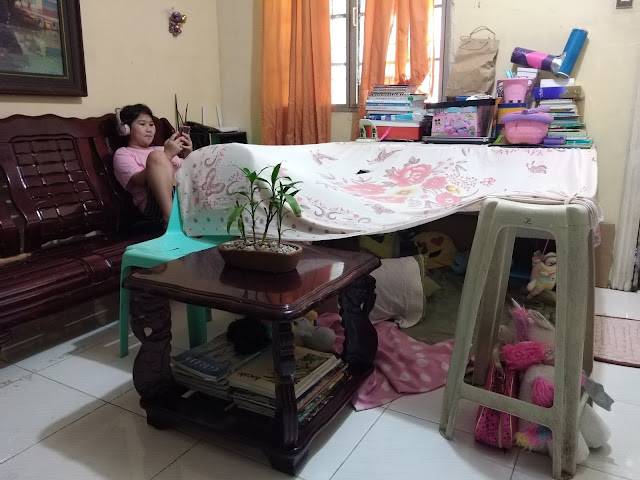Lia made a fort out of cardboard boxes and blankets under a desk in our living room. She snuggles down in that corner 12 hours a day – during online classes, while doing homework, eating, and playing; and everything in between. This is how our house looks every day now – sometimes worse. If it has a palette, it’s called disarray.
People are sometimes surprised to know that were was a time when our house was clean and organized. As a young adult, I treated my room like a temple befitting of orderliness and identity. Naturally, I struggled with accepting that this is the kind of space I will be living in for the rest of my life after giving birth. So I tried to keep the house neat. If you ever kept two full-time jobs, maintained a house, and raised a kid and pets all at the same time, you will know there is no way you can ever survive years of Marie Kondo-ing without transforming into an overstressed and, sometimes, resentful hag. One would have to go – and it doesn’t have to be your sanity.
Embracing chaos isn’t always about neglect. It’s also about attention and learning to let go of ideals, so you can be here in this moment. When young minds are being shaped and beautiful forts are being built. When you give yourself to allowing life to transpire as it should, without worrying about people who are simply passing by.
Parenthood is a beautiful lesson on the nature of impermanence, including that of relationships: with your child, with yourself. There’s much to trade and peel away in exchange for some wiggle room, peace of mind, a few minutes of nap or stillness. We abandon the idea of immaculate spaces in exchange for time. But more importantly, because a house will not always look like this. There will come a time a child will no longer be interested in making forts, in imagining wild worlds, in living as carefree and as curious as they are now. There will come a time when that fledgling will be in full flight, and all you will be left with is an empty nest and plenty of time to keep it spic and span.
The truth is that a house is merely a house. What makes it sacred isn’t a pristine state. It’s the random, fleeting memories unfolding inside.


